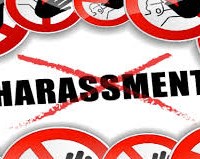Comments to Proposed Harassment Guidance Critical of EEOC’s Position on LGBT Bias
(Reposted from the Labor & Employment Law Navigator Blog – Click Here to Subscribe)
Before the expiration of the extended deadline last week, the U.S. Equal Employment Opportunity Commission received over 100 comments to its proposed Enforcement Guidance (“Proposed Guidance”) on workplace harassment. The revised guidance is the first revision to the EEOC’s workplace harassment guidance since the 1990s and the result of the July 2016 report by the EEOC’s Select Task Force, which notes that “During the course of fiscal year 2015, EEOC received approximately 28,000 charges alleging harassment from employees … This is almost a full third of the approximately 90,000 charges of employment discrimination the EEOC received that year.” See report here.
In addition to other aspects of the Proposed Guidance, certain commentators such as The Employment Law Alliance (“ELA”), the U.S. Chamber of Commerce (“The Chamber”), and The Society for Human Resources Management (“SHRM”) were particularly critical of the EEOC’s position on sexual orientation bias and harassment as inconsistent with existing law and outside the scope of the legislative intent of the statute.
The Proposed Guidance confirms the EEOC’s position that harassment based on gender identity and sexual orientation is prohibited under Title VII, and defines the two terms as follows:
- Gender identity: Sex-based harassment includes harassment based on gender identity. This includes harassment based on an individuals’ transgender status or the individual’s intent to transition. It also includes using a name or pronoun inconsistent with the individuals’ gender identity in a persistent or offensive manner.
- Sexual orientation: Sex-based harassment includes harassment because an individual is lesbian, gay, bisexual, or heterosexual.
Each of these definitions is accompanied in the Proposed Guidance by a footnote. As The Chamber noted in its comment, however, the single case referenced by the EEOC in its gender identity footnote is a case issued by the EEOC itself, not a Court. The EEOC’s footnote to its sexual orientation definition also highlights one of its own cases and contains an arguably one-sided and misleading representation of support for its own position. As The Chamber notes, the Proposed Guidance fails to include several Court-issued rulings that explicitly reject the EEOC’s position. SHRM’s comment to the Proposed Guidance also expressed concern that the EEOC failed to clearly communicate in the body of the Proposed Guidance that its position is opposed to established law, as the EEOC did in other areas of the Proposed Guidance. The ELA similarly observed that the EEOC’s inclusion of “gender identity,” “transgender status,” an “individual’s intent to transition” and “sexual orientation” is beyond the plain language of Title VII and “reflects the commission’s impermissible trespassing into legislative rulemaking.”
While the EEOC has been similarly chastised by multiple other sources during the recent past for “legislating” and not regulating, the EEOC has continued to actively pursue its position on LBGT and gender identity issues and it is unlikely to take steps to substantially revise its position or the final Guidance.


